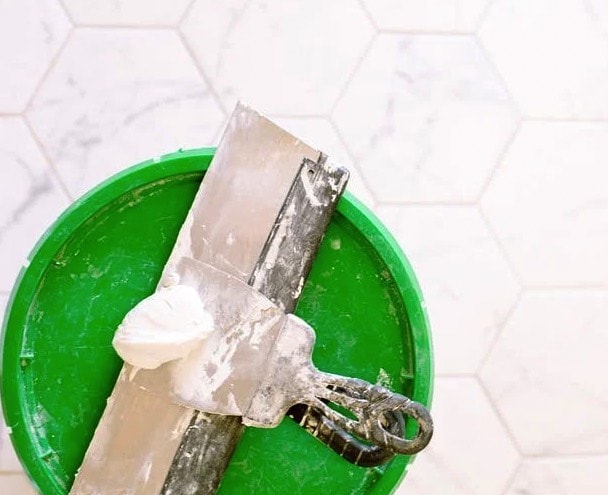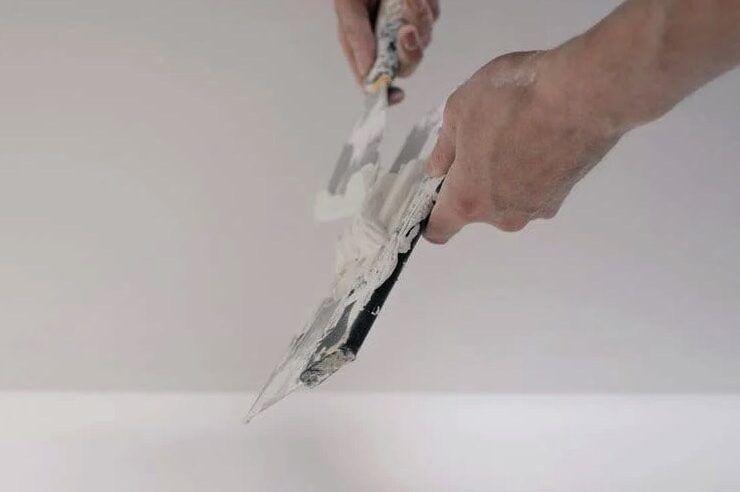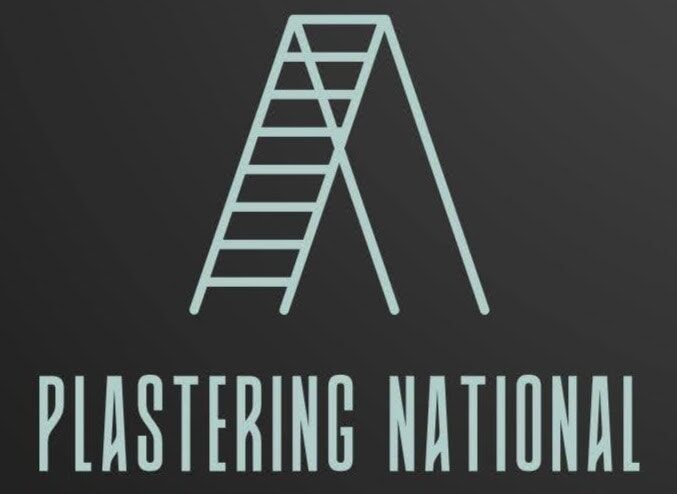It’s common knowledge that the right equipment makes all the difference while practising a specialised job, such as plastering.
Plastering is an art form that takes years of practise and study to master; nevertheless, even if you aren’t a professional, modern technology has made it possible to get a satisfactory finish by simply using the necessary equipment.
You need a steady hand and a stable mind to be a good plasterer.
Having the proper equipment at your disposal is crucial if plastering is on your list of tasks.
Investing in high-quality plastering tools will reduce labour time significantly.
They deliver high-quality outcomes and could give your work an air of sophistication.
If you want to master the plastering processes and get the job done right, you need the right plaster tools.
If you’re a plastering neophyte, you can get a special kit designed for beginners.
A hammer and trowel are among the most fundamental plastering tools, but there is also a wide selection of more complex and high-tech instruments available, such as industrial-sized mixers.
This checklist can be used by plasterers at any level of experience to ensure they are ready for any job that comes their way.
The methods used to apply plaster have not changed in decades.
On the other hand, advancements in the tools available to artists today ensure that they can continue to perform their work at a high level.
You may get your hands on a wide range of cutting-edge, high-quality plastering equipment to help you get the job done rapidly. We’ll discuss the plastering equipment both experienced plasterers and novices should have.
Instruments for Plastering Are Necessary
Plasters made from lime, clay, and gypsum date back to roughly 7500 BC. In contemporary Australian construction practises, plasterboards are widely used as internal walls to create the layout, as well as a solid foundation and blank canvas to decorate.
Professional plasterers can seamlessly combine sheets of Plaster Board to create walls while hiding all visible seams.
The likes of ceiling roses, cornices, arches, columns, vaulted ceilings, and domes only serve to amplify the visual impact of a room.
However, plastering is a highly specialised craft that calls for meticulous attention to detail. If the proper equipment is not employed, a plastering job will not go as smoothly as expected, resulting in more time and effort spent on the job and less money earned by the professionals doing the work.
Professional plastering tools are available for use by those with more experience in the trade.
It’s true that many plastering tools are developed with the professional plasterer in mind, but there are also many excellent tools available for the amateur and the do-it-yourself plasterer.
The employees at most home improvement and hardware businesses are quite knowledgeable and happy to help with any questions you may have about the products they sell.
Don’t be shy about inquiring about the different plastering tools available and which ones they recommend for beginners and pros alike.

How to Find the Right Plastering Equipment for the Job – Your Safety at Work
The length of time you’ll be on your feet when plastering is crucial.
Plastering by hand requires the use of instruments that are easy on the hands.
For improved comfort and control, several modern plastering tools have adopted a banana-shaped grip.
We’ve compiled a list of the most essential plastering equipment, from trowels to shears.
The Final Trowel
Like the pointing trowel, the finishing trowel is an indispensable tool for any plasterer.
The plaster is shaved off with greater efficiency because to the tool’s wider, flatter blade, giving your walls a flawless sheen.
Blades can be made from a variety of materials, including stainless steel, polished, Carbon steel, hardened and tempered stainless steel, and lacquered stainless steel.
Most trowels are composed of steel, although other materials as polyurethane floats are now on the market. Lightweight trowels are getting more and more popular, so that’s something to think about as well.
It makes sense to spend money on a high-quality instrument as you will be using it regularly.
Decorational Form Maker
Plastering isn’t complete without an ornate form tool. Having one of these decorative shape tools on the truck is essential when dealing with details, moulding, and columns.
It’s not just a pretty face – the ornamental form tool can also do some serious work with a blade.
Many ornamental form tools include two ends that can be used in tandem to speed up and improve the quality of the work. In addition, picking a sturdy material will help guarantee that the instrument will last for a long time.
A Corner Trowel for Both Inside and Outside Use
Plasterers also need inside and outside corner trowels, which are used to finish corners more quickly and easily while still producing a professional look. In order to save time and simplify the process, these trowels are designed to reach into tight spaces and finish off even the toughest corners and edges.
Drop Cloths
The job of plastering has long had a reputation for being a messy one.
However, if you are working for a client, you can impress them by keeping the plastering area as tidy as possible by using dust sheets as needed.
Doing your own plastering at home? Impress your sweetheart by being neat and tidy about it!
The job site is always left in the same or better condition than when the plasterer began.
A skilled plasterer knows the value of a clean work space.
Using a Squeegee and a Trowel
A larger squeegee trowel can be used for faster work on larger surfaces and walls. Larger squeegee trowels, such as a 24-inch model, are also available. The squeegee trowel isn’t used to apply the final coat, but it helps get a smooth, even surface.
A couple squeegee trowels should always be available in every plasterer’s equipment. Using squeegee trowels from the same manufacturer helps maintain a consistent feel.
Building a Mortar Pad
Although it may seem obvious, there is another another low-cost adjustment that can significantly increase output on the job.
A mortar stand is a portable, collapsible table designed for holding and transporting mortar and plaster.
The simplest approaches are often the most effective.
Slouching Float
In the plastering trade, an angle float is a must-have tool.
The vast area smoothing and application handles of angle floats are a distinguishing feature.
As an added bonus, most angle floats come with a convenient grip that makes it easy to steer the float as needed.
It’s a good idea to stock up on floats of varying sizes so you can tackle any challenge. The angle float is particularly handy for sprucing up edges and corners.
Hawk
An artist’s palette or tray can be compared to a plastering hawk in terms of its function.
The hawk is a square tray with a long handle. Hawks are used to carry the wet plaster.
It’s easy for the plasterer to just reach down, grab a handful of the wet stuff, and apply it to the wall using a trowel.
The size of the hawk is less significant than how the handle feels in your hand.
Wet plaster can be a headache to transport if you aren’t made for the hawk.
Cast Iron Mortar and Pestle
A mortar pan serves as a portable mixing and storage container for small volumes of plaster.
Mortar containers are often made out of polythene. Polythene makes it less of a chore to clean the mortar pan after a project is done.
You can use the mortar pan with a variety of different boards. The small border of the mortar pan is prefered by many plasterers because it allows them to maintain a tidy work area.
Instrument for Cleaning Windows
Plasterers usually go for window trowels when working in tight spaces around windows, when larger trowels would be ineffective.
The narrower blade face of this tool is designed for easier manoeuvrability over the wall in tight spaces, hence it is best suited for use around windows as the name suggests. If you do a lot of DIY work around the house, you absolutely need this item.
Spade Trowel
A bucket trowel is an essential equipment for any plasterer, and you should get one as soon as possible if you don’t already have one. Cement may be transferred from a bucket to a plastering hawk quickly and efficiently with this equipment.
If you need to move heavy amounts of plaster from one tool to another, a full bucket trowel is your best bet.
Leather Gloves
Plaster is quite sticky and will easily spread across your fingers and hands. Additionally, washing off dry plaster from one’s hands is a laborious and sometimes uncomfortable process.
The best option for plaster specialists is to choose a pair of work gloves that is both comfortable and easy to clean up at the end of the project.
Your ability to complete the plaster job efficiently and profitably depends on how well you can maintain order throughout the process. Discover a pair of work gloves that can be easily washed and do not hinder your performance.
Snips
Snip tools are used mostly for trimming and cutting beading in modern plastering. In order to make beads, cold steel and stainless steel are two common metals to employ, so it’s important that your snips can cut both.
Snips with longer handles provide more leverage, making quick work of clipping up beading. A excellent pair of snips are essential for any plasterer.
Handsaw
There will be times in your career as a plaster expert when you’ll need to cut and repair wood in preparation for plastering.
Drywall sheets can also be trimmed with a handsaw. Pick out something that has a good edge and is easy to use.
For this job, a small saw would do just well; in fact, it will be more practical and easier to handle than a big one.
A handsaw’s ergonomic grip is one of its most important features.
Eye protection
Many plasterers no longer feel the need to wear protective gear while on the job.
But you really shouldn’t. Working with plaster raises the risk of getting plaster dust or shards in your face or eye if you move quickly.
For jobs that require you to get up high, this is a must-have.
Many fashionable and functional options for protective eyewear are available. Invest in a pair of safety glasses you’re happy to wear if you want to wear them for the most period of time possible.
Blade, Utility
Many types of work, such as plastering, require a variety of specialised instruments, one of which is a utility knife. The utility knife will come in handy for scoring walls and opening materials to be used in the plastering process.
Higher-quality utility knives often come with extra blades. A plaster expert will spend their day with a high-quality utility knife at the ready. The daily nature of its use dictates that it be a compact but sturdy tool.

Hammer
A professional plasterer should get a sturdy hammer.
You can use a hammer to remove any plaster or stray plaster pieces that have become stuck. A claw hammer is one of the greatest options, but a drywall hammer is equally effective.
The functionality required for plastering can be provided by lightweight, portable hammers.
Flier Plasterers
After applying the last coat of plaster, you should go over it with a plasterer’s float once more to smooth out any bumps.
Because an uneven surface will occur if the top layer of plaster is not smoothed down, this tool is another essential item for any plasterer’s toolkit.
Step Stool
Plastering an entire wall or ceiling requires the use of a stepladder.
With a work platform at the top of the ladder, you’ll have a convenient spot to keep supplies and equipment. This implies less ascending and descending the staircase!
Patching Blade
Plastering using a spackle knife is not the most effective method.
A spackle knife, on the other hand, is indispensable for tidying up crevices and filling in gaps in confined areas.
Most plastering professionals favour the somewhat larger spackle blades.
Spackle knives can have their blades widened to more quickly cover larger areas.
Brush
A premium paintbrush is used in the finishing stages of plaster preparation.
If you use a wet paintbrush to wipe down the wall afterwards, you can achieve a much more seamless appearance in the final product.
Brushes with a greater wall thickness are more efficient because they hold more water and can be used more rapidly.
Many artists consider a paintbrush with a 4-inch bristle length to be the best available.
Sponge
A damp sponge, often known as a “sponge float,” is used to even out the wall after plastering. They are useful for removing trowel marks and air bubbles from plaster as well.
Paddle for Mixing
Plaster ingredients are well mixed with a mixing paddle. Smooth plaster can’t be achieved without a mixing paddle.
Before adding plaster to a wall, experts must make sure the consistency is precisely correct.
When the consistency of the plaster is incorrect, it can cause issues with durability, paint retention, and the final product.
Since mixing paddles may be found in many different shapes and sizes, you can choose one that is suitable for your particular undertaking.
Scarifier
Use a large metal comb to scrape away at the render before applying the second layer.
A scarifier is a must-have for any plasterer since it is used to comb lines directly into the render, creating a stronger bond for the subsequent layer.
If you’re looking to improve the look of your walls and ceilings, purchasing one of these is a good investment.
Knife for Jointing or Taping
Applying joint compound (“mud”) to drywall requires a broad-bladed tool called a jointing or taping knife.
The tool’s ergonomic handle makes it a pleasure to wield. Various blade lengths are available.
Tools for Opening Buckets
An easy way to get to the spackle you’ve pre-mixed in a bucket is to use a bucket lid opener.
This may seem like an unnecessary extra step, but it is essential if you want to save your tools and hands from getting damaged when you open the bucket.
An cheap bucket lid opener is a crucial piece of equipment for any plaster professional’s tool belt.
Products for Cleaning
Plastering tools should be kept clean to avoid having to buy new ones frequently.
If you keep your plastering tools clean, you can increase your revenue without having to buy any new equipment.
Trowels and hawks, in particular, are essential to have on hand.
If you use a soft brush, some mild detergent, and warm water, your plastering tools will be as good as new in no time.
Having a general idea of how much money you’ll need to invest on a plastering kit now that you know what tools you’ll need to get started on plastering tasks is a good first step.
Plastering Equipment Shopping
If you’re researching plastering tools online, it is sense to start with DIY online providers because many online organisations provide excellent deals on plastering tools and all other types of goods and services.
If you use a search engine to look for the type of plastering tool you need, you should be able to find vendors who are willing to provide you with price quotes for the various options you’re considering.
Buying your first set of tools might be exciting, but it’s important not to go overboard.
Quite simply, there’s no point.
Let’s pretend that you’re interested in making a living as a plasterer. If you want to save up for better plastering tools, it’s best to stick to the bare minimum until then.
Conclusion
When engaging in specialised work, such as plastering, having the appropriate tools makes all the difference.
Spending money on better equipment will reduce working time and give your finished products more of a professional sheen.
Both seasoned pros and newcomers to the trade can benefit from using this checklist before beginning any plastering project.
Tools that are gentle on the hands are essential for hand-applied plastering. Here is a rundown of the most crucial tools any plasterer should have.
A mortar stand is an easily foldable worktable for transporting and storing building materials like mortar and plaster. Every plasterer ought to have at least two squeegee trowels on hand.
When touching up edges and corners, the angle float comes in handy. Any competent plasterer would be recovered with a bucket trowel. In contemporary plastering, snip tools are mostly utilised for trimming and cutting beading.
Sheets of drywall can also be cut using a handsaw. Hand protection that can be cleaned quickly and doesn’t slow you down on the job. To plaster a whole wall or ceiling, a stepladder is required.
The best instrument for a professional plasterer is a claw hammer or drywall hammer, which are quite solid and built to last. Cleaning up cracks and filling in holes is a professional’s job that requires a spackle knife.
After the plaster has dried, the wall is smoothed with a damp sponge. Thicker-walled brushes are more effective because they can store more water and be used faster.
When working with render, a scarifier is essential because it is utilised to comb lines into the material. To save money, plastering equipment should be kept clean. Particularly important are tools like trowels and hawks.
Quickly restore your equipment to like-new condition with a light brush, mild detergent, and warm water.
Content Summary
- It would be best if you had a steady hand and a stable mind to be a good plasterer.
- Having the proper equipment is crucial if plastering is on your list of tasks.
- Investing in high-quality plastering tools will reduce labour time significantly.
- It would be best to have the right plaster tools to master the plastering processes and get the job done right.
- You may get your hands on a wide range of cutting-edge, high-quality plastering equipment to help you get the job done rapidly.
- We’ll discuss the plastering equipment both experienced plasterers and novices should have.
- Professional plastering tools are available for use by those with more experience in the trade.
- Many plastering tools are developed with the professional plasterer in mind, but there are also many excellent tools available for the amateur and the do-it-yourself plasterer.
- Plastering by hand requires using instruments that are easy on the hands.
- We’ve compiled a list of the essential plastering equipment, from trowels to shears.
- Like the pointing trowel, a finishing trowel is an indispensable tool for any plasterer.
- Spending money on a high-quality instrument makes sense as you will be using it regularly.
- It’s not just a pretty face – the ornamental form tool can also do some serious work with a blade.
- Many ornamental form tools include two ends that can be used in tandem to speed up and improve the quality of the work.
- However, if you work for a client, you can impress them by keeping the plastering area as tidy as possible by using dust sheets.
- A skilled plasterer knows the value of a clean workspace.
- A mortar stand is a portable, collapsible table for holding and transporting mortar and plaster.
- An artist’s palette or tray can be compared to a plastering hawk in terms of its function.
- You can use the mortar pan with a variety of different boards.
- Many plasterers prefer the small border of the mortar pan because it allows them to maintain a tidy work area.
- A bucket trowel is a piece of essential equipment for any plasterer, and you should get one as soon as possible if you don’t already have one.
- A full bucket trowel is your best bet if you need to move heavy plaster from one tool to another.
- Discover a pair of work gloves that can be easily washed and do not hinder your performance.
- An excellent pair of snips are essential for any plasterer.
- Many fashionable and functional options for protective eyewear are available.
- Invest in a pair of safety glasses you’re happy to wear if you want to wear them for the most period possible.
- Many types of work, such as plastering, require a variety of specialised instruments, one of which is a utility knife.
- A plaster expert will spend their day with a high-quality utility knife at the ready.
- This implies less ascending and descending the staircase! Plastering using a spackle knife is not the most effective method.
- Many artists consider a paintbrush with a 4-inch bristle length the best available.
- A damp sponge, often known as a “sponge float,” is used to even out the wall after plastering.
- Plaster ingredients are well mixed with a mixing paddle.
- Before adding plaster to a wall, experts must ensure the consistency is correct.
- When the consistency of the plaster is incorrect, it can cause issues with durability, paint retention, and the final product.
- Use a large metal comb to scrape away at the render before applying the second layer.
- Applying joint compound (“mud”) to drywall requires a broad-bladed tool called a jointing or taping knife.
- An easy way to get to the spackle you’ve premixed in a bucket is to use a lid opener.
- A cheap bucket lid opener is a crucial piece of equipment for any plaster professional’s tool belt.
- If you keep your plastering tools clean, you can increase your revenue without buying any new equipment.
- Having a general idea of how much money you’ll need to invest in a plastering kit now that you know what tools you’ll need to get started on plastering tasks is a good first step.
- If you want to save up for better plastering tools, it’s best to stick to the bare minimum until then.
Frequently Asked Questions About Plaster
Can You Mix Plaster Without a Drill?
Yes, you can mix plaster without a drill. If you want to mix plaster with a power tool, a cordless or electric screwdriver is best. First, remove the batteries so the tool does not get bogged down when mixing water and plaster. A standard drill will also work, but it is more difficult to control the speed of the spinning action, which makes it easier to over-mix or under-mix your product.
What Is the Best Trowel for Plastering?
The best trowels for plastering are solid, rounded trowels. The Permashape Marshalltown is a favourite among beginner plasterers for its versatility and ease of use. The Marshalltown trowel is particularly handy for putting on and second coating.
What Brush Do Plasterers Use?
Plasterer’s brushes are normally used for applying water straight onto walls or ceilings that are being prepared to be plastered but can also be used for roughening up plaster before applying the final coat.
What Kind of Trowel Do You Need to Apply Plaster?
Applying and smoothing plaster requires a good trowel. Plaster-pros will have many stage-specific trowels, but beginners can get away with one sturdy rectangular trowel. A 12-inch model should do the trick. Break your trowel in by sanding the corners, so they aren’t at such sharp angles.
What Kind of Hammer Do do You Need for Plastering?
Would-be plasterers will do well to keep a trusty hammer on hand. The two most useful hammer types are claw and drywall hammers. Either type can help chip out chunks of plaster and resecure or remove problem pieces of lath.

